The movie talks about how the governor of Arkansas was a white supremist and didn't want the Japanese "dumped" there. He at first overtly refused to allow them in but he and the others who opposed this were later convinced by government promises that money would be pouring into their economy because of the relocation program. At that, the governor set a variety of conditions before allowing them in.
After six months in assembly centers some 16,000 Japanese and Japanese-Americans are shipped via train to the internment camps in Arkansas.
(Something I had not found elsewhere in my reading. Rohwer had only 142 residents, Jerome had only 112 and they were being shipped 16,000 Japanese internees so it's not surprising they felt a little overwhelmed. On the other hand I can also see where it would, indeed, be a major boost to the economy of the area as all the buildings would have to be constructed so plenty of laborers would be able to find jobs.)
One of the guard towers.
The government wanted the camps to be self-sufficient so the internees were hired to work there and some of them were paid the astounding sum of $12 a month. If they were lucky they got $19 a month.
Another thing the film points out which I haven't seen elsewhere was that Caucasians who agreed to become teachers at the camps ended up getting paid quite a bit more than they would have made teaching regular public schools. That caused some of the local population to get angry. They also got angry over the food that the internees got, the camp hospitals and lots of other things basically going along the line that the Japanese internees were treated better than they were.
The film then goes into how the family unit of the Japanese internees fell apart at the camps, how Issei men felt out of place, etc.
One of the many signs showing the intense segregation already in the area. The Japanese-Americans didn't know where they fit in, what they should do, but whites often treated them the same as they treated black people of the time.

The movie notes that many Nisei students wanted to go back to college, bu the presidents of the colleges in Arkansas said they didn't want them there because if they admitted them then they would have to admit blacks, too.

Gradually some of the internees found employment outside the camps and were allowed to leave, although the governor of Arkansas refused to allow any of them to accept jobs in the state even though there was a labor shortage.
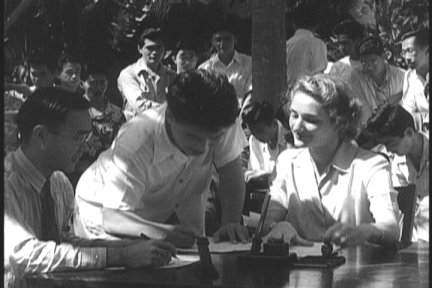
Men in Hawaii volunteering to form the first all Japanese-American fighting unit. They were shipped to Mississippi for their training.
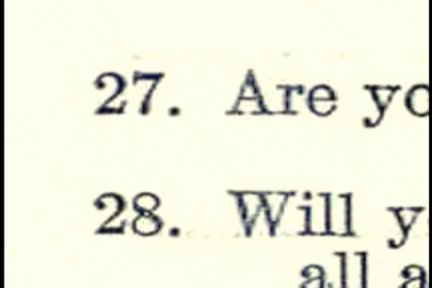
The infamous loyalty questionnaire.
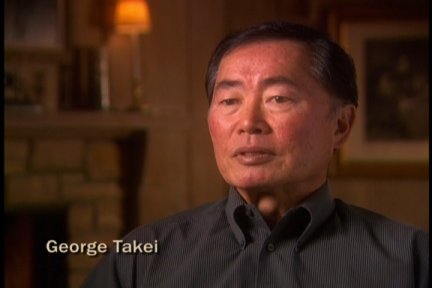
George Takai (Sulu) was in the internment camp from age 4 to age 8. He says his father answered "no" to both questions. ( Issei, the Japanese aliens, were not American citizens and were not allowed to be American citizens, so if on question 28 they said they would give up all loyalty to the Japanese Emperor they whey would, technically, become people without a country).
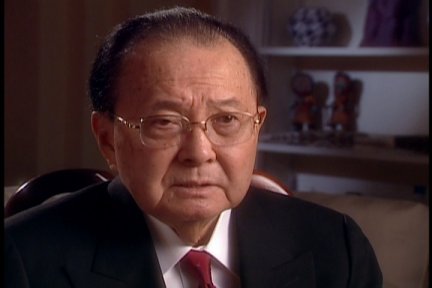
Although some of the men volunteered for the Army (the Army had dropped its ban on Nisei volunteers), there apparently were some bad feelings between the Nisei from Hawaii and those from the mainland. This led to fights and for a while senior officers considered disbanding the unit. The situation was diffused when some of the Hawaiian Nisei officers were taken on trip to see Rohwer and they realized how their own people were being treated. They pointed out to the other men that the mainland Nisei had still volunteered under those circumstances and that ended the bad feelings between the two groups.

The film goes into some of the history of the 442nd and how they fought in Europe.
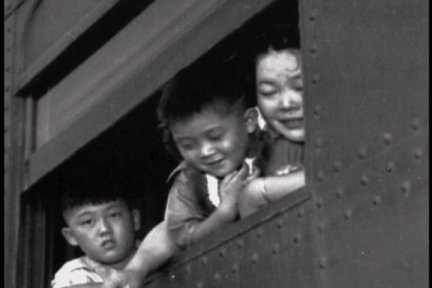
The time finally came when the government there was no need for the camps (plus a Supreme Court decision that said you couldn't keep the Nisei out of California legally), so the closing of the camps began.

President Reagan (1988) gives an official government apology for the internment program, citing racism, fear and bad political decisions as reasons for what happened.
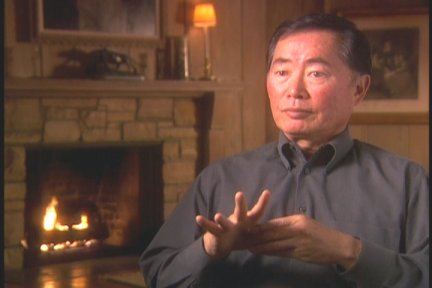
George Takai talks about how the entire internment process was illogical, racist and unconstitutional.
(This is an excellent program. There's always something about seeing footage of video showing what was happening that makes it even more real than just looking at pictures. I don't know why, that's just my opinion, but in any case to see what was happening to these people who had done absolutely nothing wrong and ended up being put in internment camps anyhow is something that should make any reasonable person feel anger, at the very least, and perhaps some fear that what was done once to one group of people because they didn't look like the rest might be done to another group of people for the same reason, or perhaps another reason.)
(We must understand history because if we don't then there's a chance that the same type of terrible things that happened to the Issei and Nisei could happen to other groups of Americans in the future. It shouldn't. At the moment there are laws which say it can't, but laws can always be changed, especially by those who wish to use the changes to further their own insidious agendas.)
Absolutely a film worth watching.
Main Index
Japan main page
Japanese-American Internment Camps index page
Japan and World War II index page